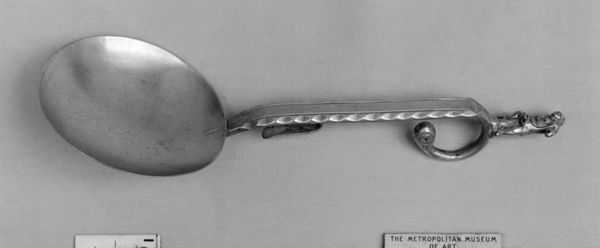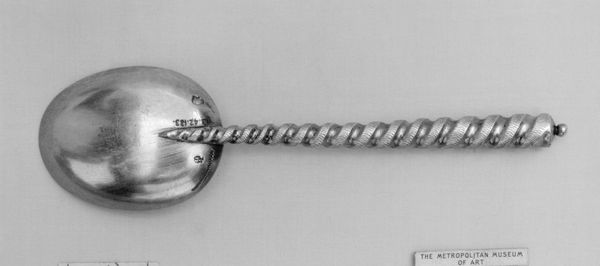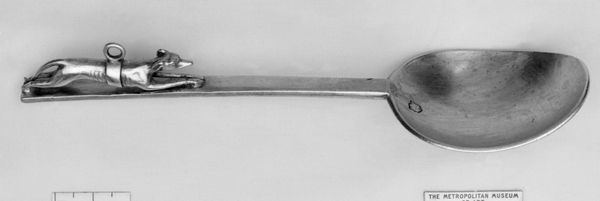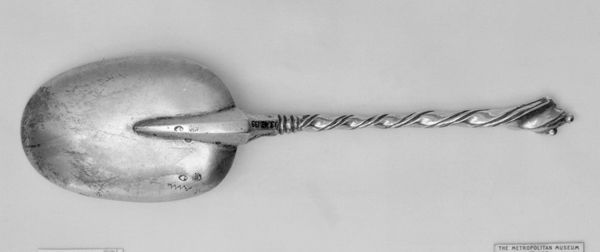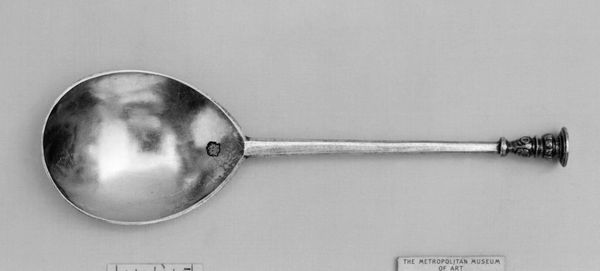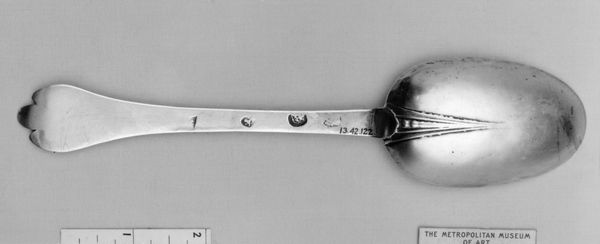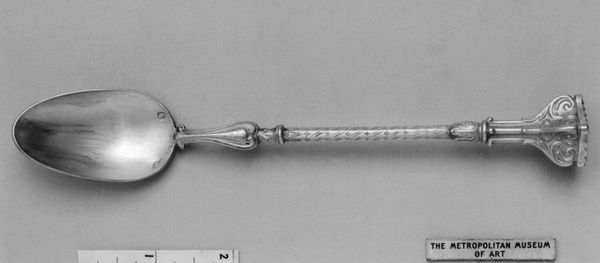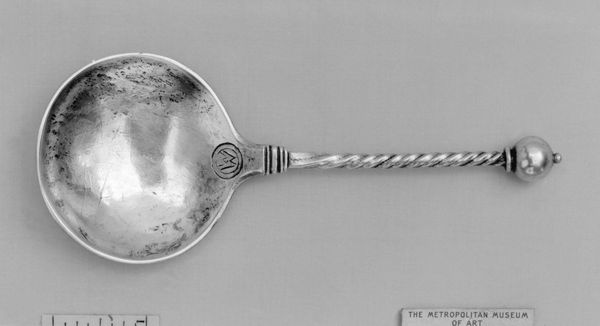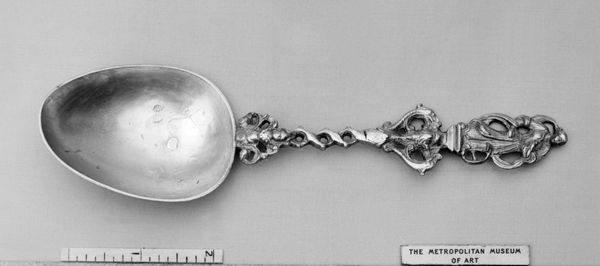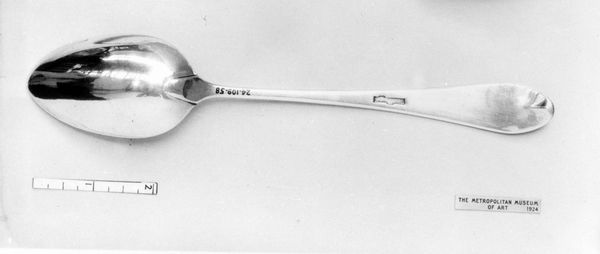
silver, metal, sculpture
#
silver
#
metal
#
sculpture
#
sculpture
#
decorative-art
Dimensions: 7 1/8 x 2 3/4 in. (18.1 x 7.0 cm)
Copyright: Public Domain
Curator: Let's take a look at a piece currently housed at the Metropolitan Museum of Art: William Scarlett’s "Spoon," crafted between 1691 and 1692. It’s made of silver, so let's talk metalwork! Editor: Instantly, it strikes me as forlorn, doesn't it? This lonely silver spoon against a grey backdrop... It almost feels monumental in its isolation, as if it's carrying the weight of centuries. Curator: Absolutely, it carries cultural weight. Silverware from this period speaks volumes about social hierarchy, about access to raw materials, about specialized labor. Notice the hallmarks stamped along the handle; each mark meticulously registered, signifying quality, maker, and origin. It’s more than just a tool for eating. Editor: Of course. One could get lost in the reflected light of that bowl. Silver is so interesting that way. It reflects not only light, but also class and the stories of those who used it at their tables long ago, possibly around a massive wooden table covered with even heavier foods. And is that some repair work I see just beneath the spoon itself? Curator: Good eye. You’re spot on. It shows us the life of an object; evidence of daily use and the care taken to maintain it. These things were treasured, handed down through generations, representing familial wealth and continuity. Each imperfection humanizes the artifact. Editor: Beautifully put. It begs the question though, does such meticulous craftsmanship and clear signs of domestic life qualify it as 'art' or simply elevate its status within decorative arts? And is such elevation valid? Or is it merely born of privilege? I mean, how is a silversmith's process any different from the daily efforts of a 17th-century scullery maid, aside from access? Curator: That’s exactly the crux of the matter! Where do we draw the line between craft and art? By examining objects like this spoon, we deconstruct these outdated boundaries. We reveal that the "functional" object possesses undeniable artistic merit—a testament to ingenuity, skill, and cultural meaning beyond its intended use. Editor: Perhaps even an unconscious artistic endeavor! And there’s the appeal—seeing evidence of someone's creativity even within the most utilitarian of items. Thinking about craftspeople adds new dimensions to how we think about both luxury and survival. Curator: Precisely. And perhaps, through studying this little spoon, we begin to re-evaluate our own relationships with the objects we consume daily. Editor: That gives me some food for thought, indeed.
Comments
No comments
Be the first to comment and join the conversation on the ultimate creative platform.
